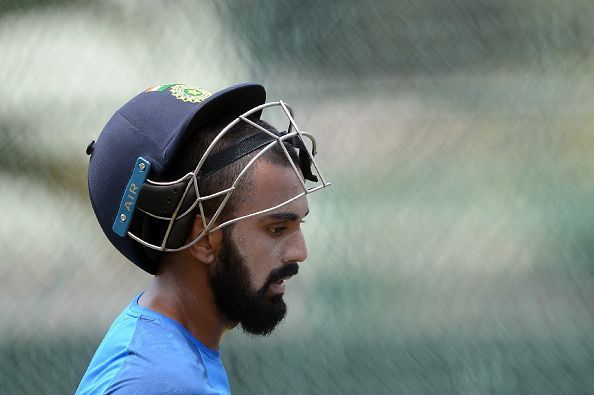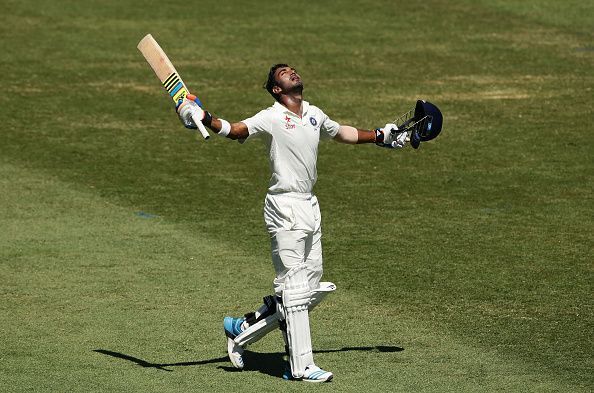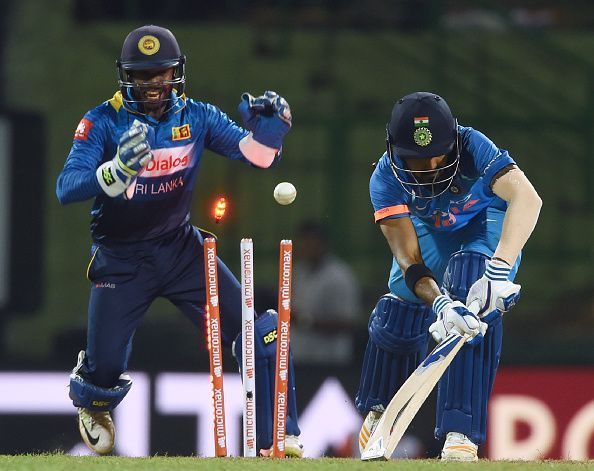
Why is KL Rahul being given mixed signals?

"KL Rahul is an outstanding talent. He has proved himself in all formats. And he is someone who needs to be backed because we believe that he has the ability. Once he identifies his role, he will start winning us games. We are very sure of that."
Half a month ago, Virat Kohli was throwing garlands around KL Rahul’s head, explaining to the media how his fellow-RCBian formed an integral part of the Indian ODI team.
A day later, Rahul found no place in the team for the first ODI against Australia, being replaced by Manish Pandey, who himself managed a four-ball duck in the match. Interestingly, Rahul did not play any of the remaining four games of the series.
This, after Rahul was specifically singled out for a role at No. 4, with MSK Prasad stating that he would be tried out for a few months, and other players might be given the role in the future.
The Indian think-tank’s process is more difficult to decipher than Darwin’s Theory of Natural Selection.
Why is KL Rahul being given mixed signals?
After a stupendous 199, scored against England last year, Rahul had proved that he belonged on the big stage. By August, he had equalled the record for most consecutive fifties in Tests. In T20Is, he averages close to 51 in nine games. Statistics like these make your omission difficult, at least temporarily, and with praise being showered continuously, you are bound to be given some leeway.

It had been a difficult phase for the right-hander, having had to forego the IPL season in order to recuperate from his shoulder troubles. By the time the Champions Trophy ended, Pandey and Kedar Jadhav had started to build up a resume for middle-order spots, while Hardik Pandya and MS Dhoni were automatic selections.
Rahul is a confidence player, one who thrives when backed by the management. Kohli knows it pretty well, having dealt with the Bangalore lad for the city's IPL franchise. The India captain had gone on to say that the team was confident that he could win matches on his own, if given an opportunity.
The very same ‘opportunities’ seem to be fast deserting Rahul in ODIs.
Against Australia, he was pipped by Pandey and Jadhav to the No. 4 spot. Even Hardik Pandya reprised that role twice in the series.
He played three of the five games against Sri Lanka, garnering a total of 28 runs from his scratchy stays in the middle. He batted at 3, 4 and 5, but was an overall dud against the quirky spin bowling of Akila Dhananjaya.

Shikhar Dhawan and Rohit Sharma, for the time being, are virtually immovable from their top two slots in ODIs. With Ajinkya Rahane’s head bobbing up whenever an opening cover is needed, it is quite a task for Rahul to break into the top.
While the No. 4 slot can change its role based on the situation of the game, Rahul has been specifically identified to feature at the pivotal spot. There are quite a few reasons to believe that, at least on paper, he seems to fit well at two-down.
If India are two down for 30, and need to consolidate, someone like a Rahul, who has proven his temperament in Test cricket, and can change his game according to the situation, would be handier than a Jadhav or Pandey, both of whose stroke-making skills, which are based more on improvising and adjusting, can feature down the order.
On the other hand, if the Indian innings is in cruise control, and Rahul is needed to close it out with overs in hand, he can change gears and don the T20 mask too. He isn’t averse to it, having done it for the Royal Challengers Bangalore in 2016. Even his T20I hundred last year came at No. 4.
If the team do have him in their grand plans for the 2019 World Cup, it will have to be made sure that he secures enough game time to acclimatise himself to the role - getting enough games in the lead-up to the tournament.
A similar situation occurred in the lead-up to the 2011 World Cup: Virat Kohli had been earmarked for a bigger role in the future. From October 2009 to the first India game at the World Cup in 2011, Kohli played more ODIs than any other player from the country (37), getting enough time to mould himself into an integral part of the upper middle-order.
Showering praise and then keeping him tied to the benches will only put more pressure on him. Not just for Rahul, if role-based selections take place, a considerable number of games should be given to players to prove themselves. In Rahul’s case, forget a long rope, the sample space was just three games. Hopefully, the rope is brandished in front of his face during the upcoming series against New Zealand and Sri Lanka (again) so that the hazy middle-order puzzle becomes clearer as the days progress.